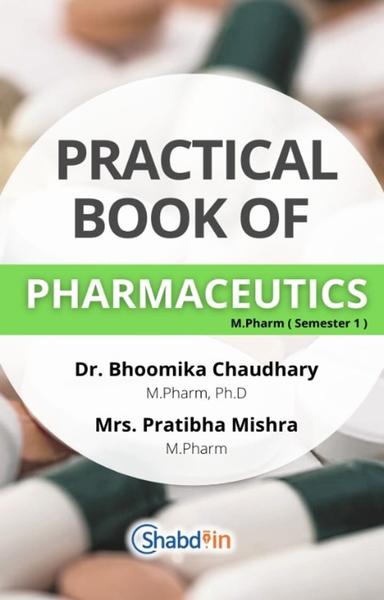AIM: Formulation and evaluation of floating drug delivery system of given drug.
REQUIREMENTS:
Apparatus: Beaker, stirrer, compression machine.
Chemicals: HPMC,Metformin HCL, NaHCO3, Lactose, Talc, Magnesium stearate.
REFRENCES:
Syed Iftequar, Maria Saifee, Lahoti Swaroop, Formulation and evaluation of floating drug delivery system, Vol 3 (1), 85-95, 20162) IndianPharmacopoeia 2010, Volume 4, page no.559.
THEORY:
Floating drug delivery system is a recent advancement in pharmaceutical technology which has also several advantages over the conventional drug delivery systems. Those advantages of floating system can be used in the treatment of world’s most affective diseases like cardiovascular diseases. Cardiovascular diseases are group of diseases which are many of the time fetal for the patients due to problems associated with the oral conventional tablets. These problems can be overcome by this delivery system.
Floating drug delivery technologies FDDS can be divided into non-effervescent and gas-generating system.
Non-effervescent systems:
This type of system, after swallowing, swells unrestrained via imbibitions of gastric fluid to an extent that it prevents their exit from the stomach. One of the formulation methods of such dosage forms involves the mixing of the drug with a gel, which swells in contact with gastric fluid after oral administration and maintains a relative integrity of shape and a bulk density of less than one within the outer gelatinous barrier.
The air trapped by the swollen polymer confers buoyancy to these dosage forms. Excipients used most commonly in these systems include hydroxypropyl methyl cellulose (HPMC), polyacrylate polymers, polyvinyl acetate, carbopol, agar, sodium alginate, calcium chloride, polyethylene oxide, polycarbonates and chitosan.
Colloidal gel barrier system:
Sheth and Tossounian first designated this ‘hydro dynamically balanced system. Such a system contains drug with gel-forming hydrocolloids meant to remain buoyant on the stomach content. This prolongs GRT and maximizes the amount of drug that reaches its absorption sites in the solution form for ready absorption. This system incorporates a high level of one or more gel-forming highly soluble cellulose type hydrocolloid, e.g., hydroxypropyl cellulose, hydroxyethyl cellulose, hydroxypropyl methyl cellulose (HPMC), polysaccharides and matrix forming polymer such as polycarbophil, polyacrylate and polystyrene. On coming in contact with gastric fluid, the hydrocolloid in the system hydrates and forms a colloid gel barrier around its surface.
Micro porous compartment system:
This technology is based on the encapsulation of a drug reservoir inside a micro porous compartment with pores along its top and bottom walls. The peripheral walls of the drug reservoir compartment are completely sealed to prevent any direct contact of gastric surface with the undissolved drug. In the stomach, the floatation chamber containing entrapped air causes the delivery system to float over the gastric content. Gastric fluid enters through the aperture, dissolves the drug and carries the dissolved drug for continuous transport across the intestine for absorption.
Alginate beads:
Multi-unit floating dosage forms have been developed from freeze-dried calcium alginate. Spherical beads of approximately 2.5 mm in diameter can be prepared by dropping sodium alginate solution into aqueous solution of calcium chloride, causing the precipitation of calcium alginate. The beads are then separated, snap-frozen in liquid nitrogen, and freeze-dried at -40ºC for 24 hours, leading to the formation of a porous system, which can maintain a floating force for over 12 hours. These floating beads gave a prolonged residence time of more than 5.5 hours.
Hollow microspheres
Hollow microspheres loaded with drug in their outer polymer shelf were prepared by a novel emulsion solvent diffusion method. The ethanol/ dichloromethane solution of the drug and an enteric acrylic polymer was poured into an agitated solution of polyvinyl alcohol (PVA) that was thermally controlled at 40ºC. The gas phase is generated in the dispersed polymer droplet by the evaporation of dichloromethane formed and internal cavity in the microsphere of the polymer with drug.
Gas-generating (Effervescent) systems:
These buoyant systems utilize matrices prepared with swellable polymers such as methocel, polysaccharides (e.g., chitosan), effervescent components (e.g., sodium bicarbonate, citric acid or tartaric acid) . The system is so prepared that upon arrival in the stomach, carbon dioxide is released, causing the formulation to float in the stomach.
Other approaches and materials that have been reported are a mixture of sodium alginate and sodium
bicarbonate, multiple unit floating pills that generate carbon dioxide when ingested, floating minicapsule with a core of sodium bicarbonate, lactose and polyvinylpyrrolidone coated with hydroxypropyl methylcellulose (HPMC), and floating systems based on ion exchange resin technology, etc.
Expandable systems: Expandable floating drug delivery dosage forms have been designed over the past 3 decades. They were originally created for possible veterinary use but later the design was modified for enhanced drug therapy in humans. These GRDFs are easily swallowed and reach a significantly larger size in the stomach due to swelling or unfolding processes that prolong their GRT.
After drug release, their dimensions are minimized with subsequent evacuation from the stomach. Gastroretentivity is enhanced by the combination of substantial dimensions with high rigidity of the dosage form to withstand the peristalsis and mechanical contractility of the stomach. Positive results were obtained in preclinical and clinical studies evaluating the GRT of expandable GRDFs. Narrow absorption window drugs compounded in such systems have improved in vivo absorption properties.
Bio/Mucoadhesive systems:
Bioadhesive drug delivery systems (BDDS) are used as a delivery device within the lumen to enhance drug absorption in a site- specific manner. This approach involves the use of bioadhesive polymers, which can adhere to the epithelial surface in the stomach.Gastricmucoadhesion does not tend to be strong enough to impart to dosage forms the ability to resist the strong propulsion forces of the stomach wall. The continuous production of mucous by the gastric mucosa to replace the mucous that is lost through peristaltic contractions and the dilution of the stomach content also seem to limit the potential of mucoadhesion as a gastroretentive force. Some of the most promising excipients that have been used commonly in these systems include polycarbophil, carbopol, lectins, chitosan and gliadin, etc.
High-density systems:
Sedimentation has been employed as a retention mechanism for pellets that are small enough to be retained in the rugae or folds of the stomach body near the pyloric region, which is the part of the organ with the lowest position in an upright posture. Dense pellets (approximately 3g/cm3 ) trapped in rugae also tend to withstand the peristaltic movements of the stomach wall. With pellets, the GI transit time can be extended from an average of 5.8–25 hours, depending more on density than on the diameter of the pellets. Commonly used excipients are barium sulphate, zinc oxide, titanium dioxide and iron powder, etc. These materials increase density by up to 1.5–2.4g/cm3.
METHOD:
Formulation Design: For Simplex Centroid Design formulation design expert 7.1.6 software (stat-ease) demo version was used. In formulation amounts of HPMC K100,Metformin HCL
Were selected as independent variables. The floating lag time (FLT), and times required for 50% of drug release (t50) and 90% of drug release (t90) were selected as dependent variables. In this optimization study Quadratic mix order and Scheffe design model were used. The targeted response parameters were statistically analysed by applying one-way analysis of variance (ANOVA) at 0.05 levels in Design-Expert 7.1.6 version software (Stat-Ease Inc., Minneapolis, MN).
Sustained
Delayed
Controlled
FORMULATION TABLE:-
S.NO | INGRDIENTS | MASTER FORMULA (mg) | WORKING FORMULA (mg) | CATEGORY |
1 | Metformin HCL | 2.5 | 25 | API |
2 | HPMC (polymer 1) | 83.33 | 833.3 | Polymer |
3 | Sodium Bicarbonate | 25 | 250 | Imparts Buoyancy |
4 | Citric acid | 12.5 | 125 | Stabilizer |
5 | NaCMC | 8.3 | 83 | Film Former |
6 | Lactose | 108.35 | 1.83 gm | Diluent |
7 | Talc | 5.8 | 58 | Lubricant |
8 | Magnesium Stearate | 4.16 | 41.6 | Lubricant |
PROCEDURE:
Weigh all the ingredients accurately.Mix the drug with geometric mixing.Compress the blend into tablets using 8.5-mm flat-face round tooling on Karnavati, 8 station RINEK rotary tablet press. Adjust the compression force to obtain tablets with hardness in range of 5 to 6 kg/cm2.Weight of tablet should be 250 mg, and should be round flat-face with an average diameter of 10 ± 0.1 mm and thickness of 3.4 ± 0.2 mm.Evaluation Parameter
In Vitro Buoyancy Studies: The in vitro buoyancy was determined by floating lag time as perthe method described by Rosa et al, 10. The tablets were placed in a 100- mL glass beaker containing simulated gastric fluid (SGF), pH 1.2, as per USP. The time required for the tablet to rise to the surface and float was determined as floating lag time.
Master formula is…..
RESULT: The time required for tablet to rise to the surface and float was found to be 14 seconds.
Remark:
Evaluation Table:
S.NO | PARAMETER | OBSERVATION |
1 | Appearance | White |
2 | Thickness (mm) | I | II | III | Mean |
0.5 | 0.7 | 0.4 | 0.53 |
3 | Folding Endurance | 65 | 69 | 71 | 68.3 |
4 | Surface pH | 5.6 |
Concentration(ug/ml) | Absorbance at 267 nm |
2 | 0.052 |
4 | 0.089 |
6 | 0.134 |
8 | 0.186 |
10 | 0.231 |
Slope | 0.228 |
Intercept | 0.0019 |
Out R2 | 0.997 |
EXPERIMENT NO: 2








